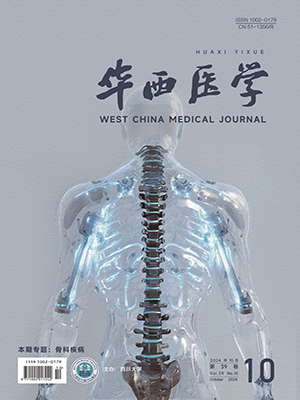| 1. |
Jeschke E, Ostermann T, Dippong N, et al. Psychometric properties of the Confidence and Trust in Delivery Questionnaire (CTDQ): a pilot study. BMC Women’s Health, 2012, 12(26): 1-7.
|
| 2. |
王江梅. 分娩时疼痛的影响因素及其对分娩结局的影响研究. 中国妇幼保健, 2014, 29(7): 1014-1015.
|
| 3. |
Rooks JP. Labor pain management other than neuraxial: what do we know and where do we go next?. Birth, 2012, 39(4): 318-322.
|
| 4. |
刘俐, 李芸, 谢徐萍. 疼痛科护理手册. 北京: 科学出版社, 2015: 9.
|
| 5. |
Miah S, Gunner C, Clayton L, et al. Renal colic and childbirth pain: female experience <italic>versus</italic> male perception. J Pain Res, 2017, 5(10): 1553-1554.
|
| 6. |
范玲, 吴连方. 产妇分娩期的生理及心理特点. 中国实用妇科与产科杂志, 2005, 21(5): 276-278.
|
| 7. |
Jones L, Othman M, Dowswell T, et al. Pain management for women in labour: an overview of systematic reviews. Cochrane Database Syst Rev, 2012, 14(3): CD009234.
|
| 8. |
荆文娟, 王国玉, 任芮, 等. 非药物镇痛法对缓解孕产妇第一产程疼痛的动态效果观察. 中国实用护理杂志, 2015, 31(增刊2): 74-75.
|
| 9. |
Kirkham M, Jowitt M. Optimising endorphins. Pract Midwife, 2012, 15(10):33-35.
|
| 10. |
Basbaum AI, Bautista DM, Scherrer G, et al. Cellular and molecular mechanisms of pain. Cell, 2009, 139(2): 267–284.
|
| 11. |
Gintzler AR. Endorphin-mediated increases in pain threshold during pregnancy. Science, 1980, 210(4466): 193-195.
|
| 12. |
Dabo F, Nyberg F, Qin Z, et al. Plasma levels of beta-endorphin during pregnancy and use of labor analgesia. Reprod Sci, 2010, 17(8): 742-747.
|
| 13. |
李凤凤. 产妇产时疼痛对分娩结局的影响. 中国城乡企业卫生, 2016, 4(4): 66-67.
|
| 14. |
刘阳. 500例接受系统产前健康教育孕妇分娩结局分析. 中国妇幼保健, 2010, 25(11): 1468-1469.
|
| 15. |
Christiaens W, Verhaeghe M, Bracke P. Pain acceptance and personal control in pain relief in two maternity care models: a cross-national comparison of Belgium and the Netherlands. BMC Health Serv Res, 2010, 10(10): 268.
|
| 16. |
谢幸, 苟文丽. 妇产科学. 8 版. 北京: 人民卫生出版社, 2013.
|
| 17. |
Madden K, Middleton P, Cyna AM, et al. Hypnosis for pain management during labour and childbirth. Cochrane Database Syst Rev, 2016, 19(5): 1-7.
|
| 18. |
Corti L. Nonpharmaceutical approaches to pain management. Top Companion Anim Med, 2014, 29(1): 24-28.
|
| 19. |
Jones LV. Non-pharmacological approaches for pain relief during labour can improve maternal satisfaction with childbirth and reduce obstetric interventions. Evid Based Nurs, 2015, 18(3): 70.
|
| 20. |
马维祥. 中华经络催眠术. 厦门: 厦门大学出版社, 2010: 305-306.
|
| 21. |
韩懿, 郑亮玉, 黄锐, 等. 临产妇睡眠质量与生存质量的典型相关分析. 中国妇幼保健, 2015, 30(26): 4533-4535.
|
| 22. |
金荷香. 催眠在女性顺产镇痛分娩中的作用机制探究. 心理技术与应用, 2014, 8(8): 53-56.
|
| 23. |
Hildingsson I. Women’s birth expectations, are they fulfilled? Findings from a longitudinal Swedish cohort study. Women Birth, 2015, 28(2): e7-e13.
|
| 24. |
李海峰.拉玛泽呼吸减痛分娩法在初产妇中的应用. 齐鲁护理杂志, 2017, 23(14)50-51.
|
| 25. |
Kobayashi S, Hanada N, Matsuzaki M, et al. Assessment and support during early labour for improving birth outcomes. Cochrane Database Syst Rev, 2017, 20(4): 1-5.
|
| 26. |
关世凡. 爱抚-是性保健、性生活的前奏. 中国性科学, 2005, 14(1): 44.
|




